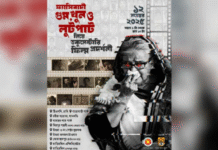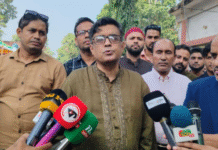Capacity building for production of high-end apparels in Bangladesh goes slow despite huge potential as most of the apparel exporters are found complacent about the existing orders for low cost products.
Experts and exporters said that a few garment producers were going for high-end products while the majority of the producers biased towards the basic items because of large volume of orders.
Bangladesh can make the apparel sector sustainable with innovations, designs and product diversification and this is the time to take the move, they said.
‘Country’s readymade garment export is still concentrated to four or five basic items but a mixed basket of export products is important for the sustainability of the sector,’ said Centre for Policy Dialogue research director Khondaker Golam Moazzem.
He said that most of the entrepreneurs were not ready to take the challenge of producing value-added products as the enquiry of buyers for the produces was also still poor.
The initiatives of entrepreneurs to attract buyers for high-end products were not enough as they were not prepared enough to take the challenges, including adaptation of technology and employment of skilled workforce to produce the high-end products, Moazzem said.
Very few entrepreneurs were moving towards the high-end products but the growth was not robust, he said.
According to Export Promotion Bureau data, Bangladesh’s apparel export was mainly concentrated to the five products including trousers, T-shirts, sweaters, jackets and shirts.
The data showed that export earnings from the five items in 2016-17 stood at $20.90 billion, 74.41 per cent of total apparel export of $28.09 billion.
Moazzem said that there were huge scopes of gaining more market share by Bangladesh in exporting medium and high value-added products including men’s suits, baby garments, lingerie and sportswear and the export growth of the items was increasing gradually.
He said that although very few entrepreneurs started to produce high-end products, it was a good thing for Bangladesh that concentration on few products started slacking.
Former Bangladesh Knitwear Manufacturers and Exporters Association president Fazlul Haque said that production and export of non-traditional products were increasing but at slower pace as the export business of apparels was totally buyer-driven.
He said that most of the garment makers produced products as per the demands of the buyers and they received orders for mostly basic items.
Most of the manufactures found comfort in managing the large volume of orders for basic products but some companies were trying for non-traditional items, Fazlul said.
He said that Bangladesh was doing well in producing sportswear and lingerie items but the performance in exporting suite was behind the expectation.
Fazlul said that besides basic products, entrepreneurs would need to go for non-traditional items but it would take time.
According to the Export Promotion Bureau data, export earnings from suites stood at $76.74 million in FY 2016-17.
Eurostat and USITC data showed that export of lingerie items to the European Union and the United States stood at $600 million in 2016.
According to sector people, due to fall in price, the lingerie export witnessed negative growth in the US market but the earnings increased in the EU market.
Industry insiders said that Bangladesh exported lingerie items of more than $1 billion in FY 2016-17.
Bangladesh Garment Manufacturers and Exporters Association senior vice-president Faruque Hassan said that some of exporters started to go for innovation, design development and product diversification.
‘A good number of states of art factories came up with the high-end production in the country and our market share in exporting high-end products would increase gradually,’ he said.
For the existence, today or tomorrow every manufacturer would need to go for new products and design as the production cost was increasing and it would not be possible to survive manufacturing low cost products, Faruque said.
Source: New Age









